Jeonju Jeondong Catholic Cathedral (전주전동성당)
Jeonju Jeondong Catholic Cathedral (전주전동성당)
 – Homepage
– Homepage
www.jeondong.or.kr
Jeondong Catholic Cathedral in Jeonju was built in honor of Roman Catholic martyrs of the Joseon dynasty on the very same spot the martyrs lost their lives. The land was purchased by French Priest Baudenet in 1891 (28th year of King Gojong), but construction of the church did not begin until 1908. Construction was completed in 1914, a time during which Korea was under Japanese rule. Though originally built just outside of Pungnammun Gate, the site of the martyrs, the church was later moved to its current location for expansion.
The first Romanesque building in the Honam region, Jeondong Catholic Cathedral is made of gray and red bricks and bears a striking resemblance to the Myeongdong Cathedral in Seoul, also designed by Priest Poinel. Not only considered one of the most beautiful Catholic churches in Korea, some even go so far as to say it is one of the most beautiful structures in all of Korea, citing the church’s unique combination of Byzantine and Romanesque architectural styles. The rectangular building is topped with three Byzantine bell towers (to the right, center, and left) and boasts arched ceilings, several of which meet in the form of a cross.
It is interesting to note that some of the bricks used in construction of the church were made using materials from the Jeonjueupseong Walled Town, which was torn down by the Japanese. It is also said that the cornerstone of the church came from a wall of Jeonjueupseong Walled Town near Pungnammun Gate.
– Address : 51 Taejo-ro, Wansan-gu, Jeonju-si, Jeonbuk-do
※ Presentation Information
– Information and Guides
+82-63-284-3222
– Parking
Available
– Operating Hours
[Mass Schedule]
Sunday: 06:00 / 09:00 / 10:30 (Mass for the church) / 17:00
Weekdays: 06:00 (Mon-Sat) / 11:00 (Tue-Thu)
Saturday: 16:00 / 18:00 (Children’s mass)
– Restrooms
Available
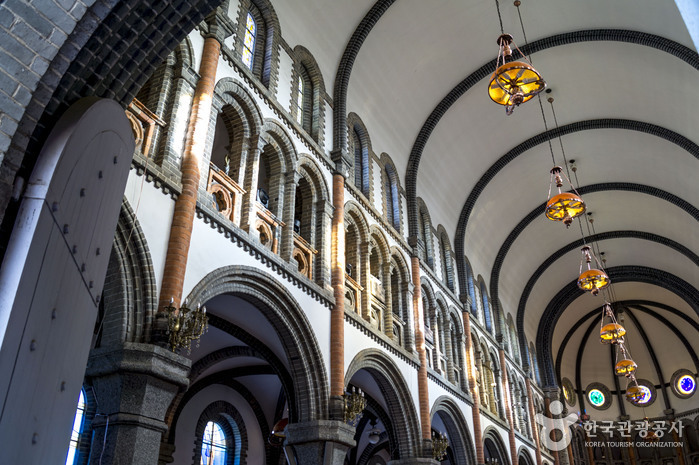

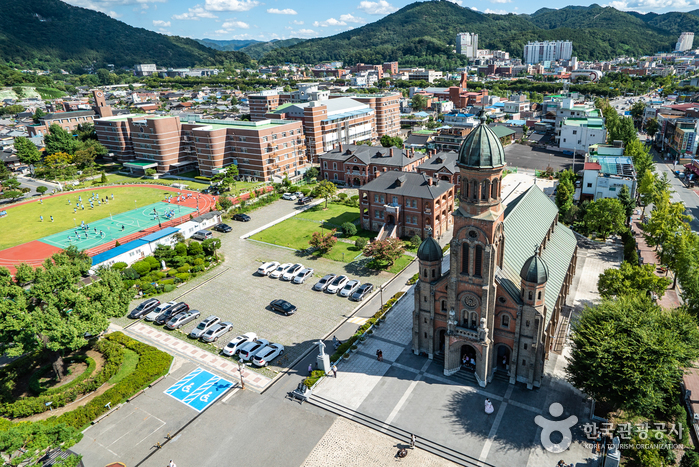

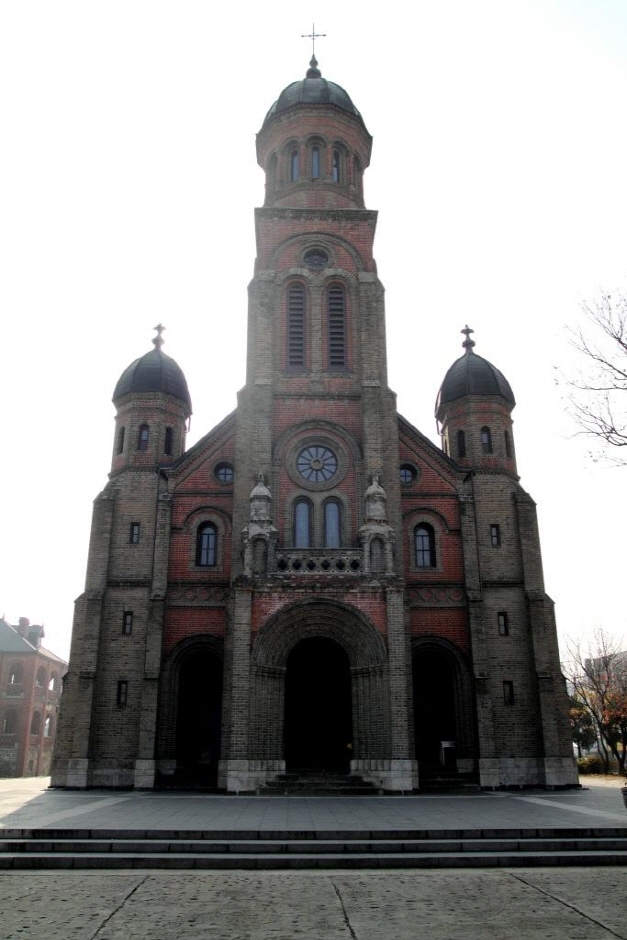
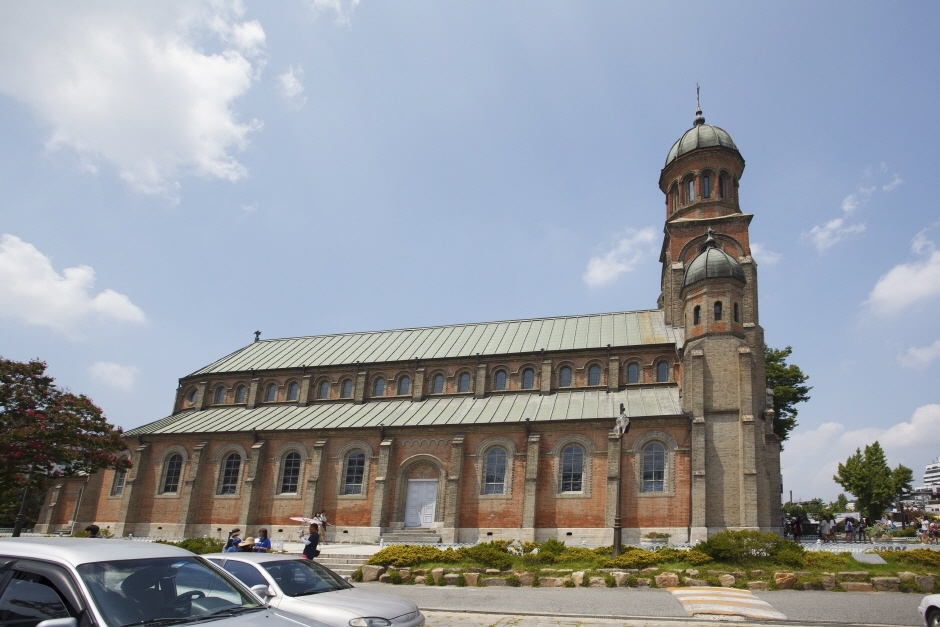


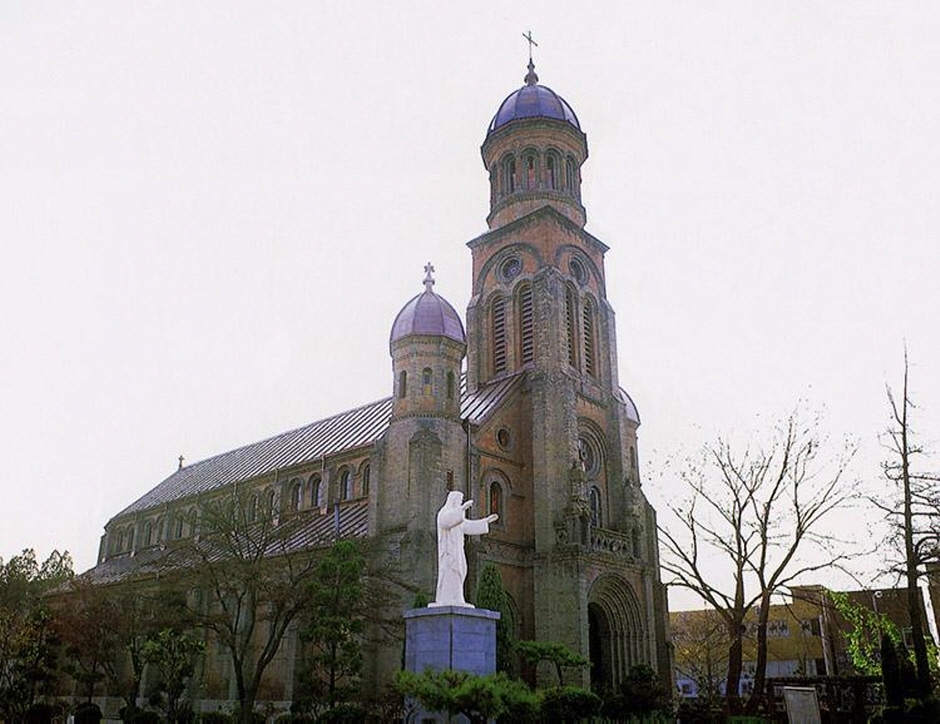
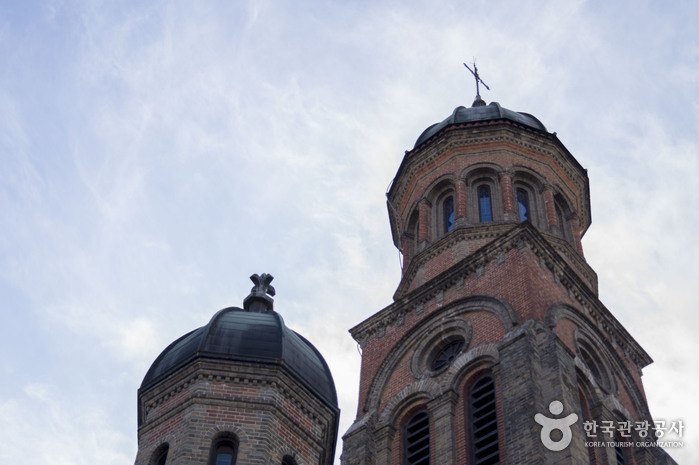
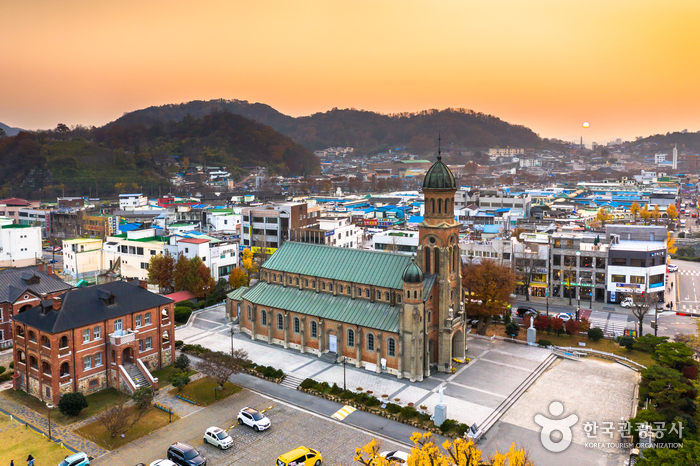
◎ Nearby Tourism Infobox
⊙ Jeonju Pungnammun Gate (전주 풍남문)
View detailed guide on Korea Trip Guide →
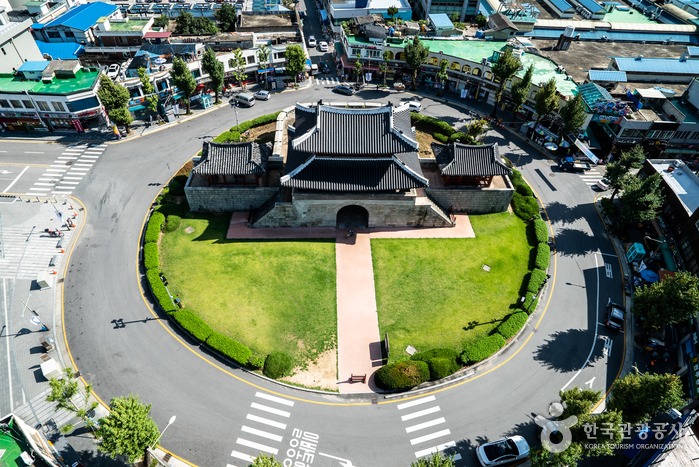
– Homepage
tour.jb.go.kr
– Tel
+82-63-287-6008
Pungnammun Gate was built during the Joseon dynasty in 1734 and is a designated Treasure. Pungnammun Gate was the southernmost gate among the four city gates of Jeonju. The structure was severely damaged by fire in 1767, followed by the restoration of the gate tower afterward. The gate was burnt down once again during the Imjin War and was restored to the gate that is seen today.
⊙ Kakao Friends – Jeonju Hanok Village Branch [Tax Refund Shop] (카카오프렌즈 전주한옥마을)
–
⊙ Jeonju Hanok Village Traditional Performance Parade (한옥마을전통연희 퍼레이드-노상놀이야)
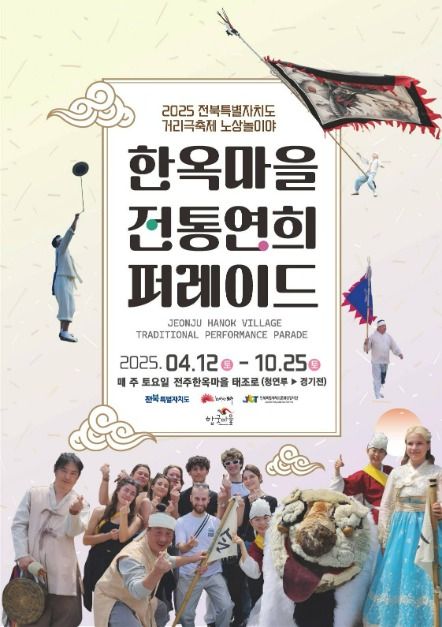
– Homepage
www.hapgood.kr
– Tel
+82-63-236-1577
The Jeonju Hanok Village Traditional Performance Parade is packed with various street performances, allowing visitors to experience Jeonju’s folk culture on the streets. During the parade, visitors can witness Jeonju Gijeopnori, a representative traditional performance of Jeonju, Madang-nori, a traditional performance featuring dance, music, and storytelling through various forms, or sing along to folk labor songs.
⊙ Jeonju Nambu Traditional Market (전주 남부시장)
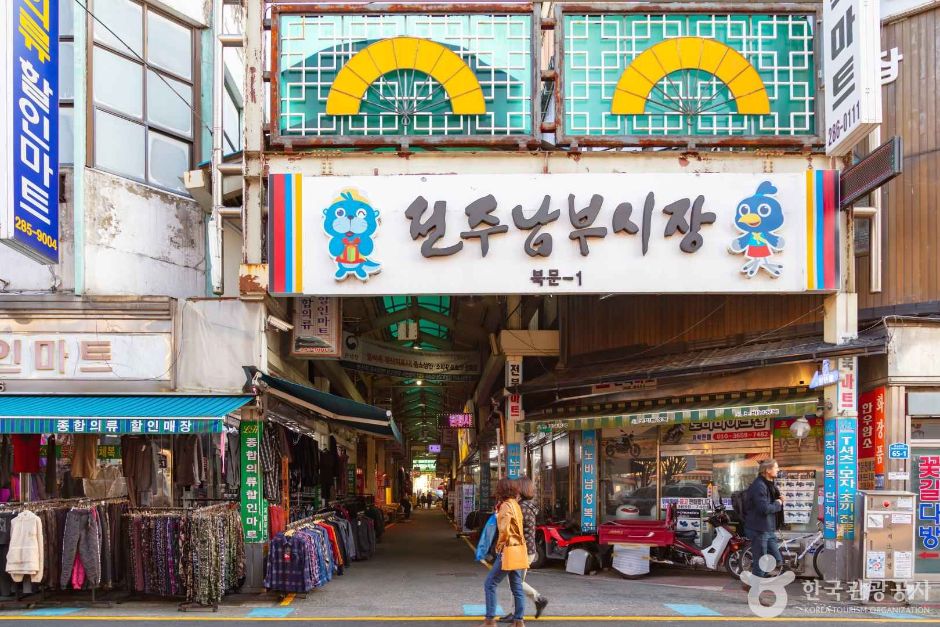
– Homepage
jbsj.kr
– Tel
+82-63-284-1344
Jeonju Nambu Traditional Market opened as a regular public market in 1905 at the site of the Joseon-era Nammunbakk Market, located just outside the Southern gate to the city. Currently the market is comprised of about 800 stores with 1,200 workers selling vegetables, fruits, food, dried fish, furniture, silk goods, and general goods.
The market was revitalized with the creation of the Youth Market, located in the previously empty shops on the second floor of 6-dong. An influx of young shopkeepers and entrepreneurs has given the marketplace an exciting vibe like that found in Hongdae or Samcheong-dong.
The night market held on Fridays and Saturdays also draws in many visitors with a multitude of delicious treats, ranging from traditional dishes such as nokdujeon (mung bean pancake) to fusion treats like bibimbap served in rice paper like a spring roll.
⊙ Veteran Kalguksu (베테랑칼국수)
– Homepage
https://smartstore.naver.com/veteran1977/
Veteran Kalguksu, located in Jeonju Hanok Village, has been operating since 1977, attesting to the great taste of their broth, made using sesame, meal, and eggs. The noodles are also cut much thinner than other restaurants, while maintaining their chewy texture. Another popular menu at the restaurant is their kongguksu.
◎ Travel information to meet Hallyu’s charm
The restaurant was a favorite spot for the cast of the drama “Twenty Five Twenty One.” Lead actress Kim Tae-ri, who played Na Hee-do, even visited for breakfast during her vlog shoots. She drew attention for enthusiastically finishing a bowl of noodles down to the last strand. Nearby is the private rental house “2521,” which was featured as Hee-do’s home in the drama, making it worth visiting after enjoying a meal at the restaurant.
⊙ Gyeonggijeon Shrine (경기전)
View detailed guide on Korea Trip Guide →
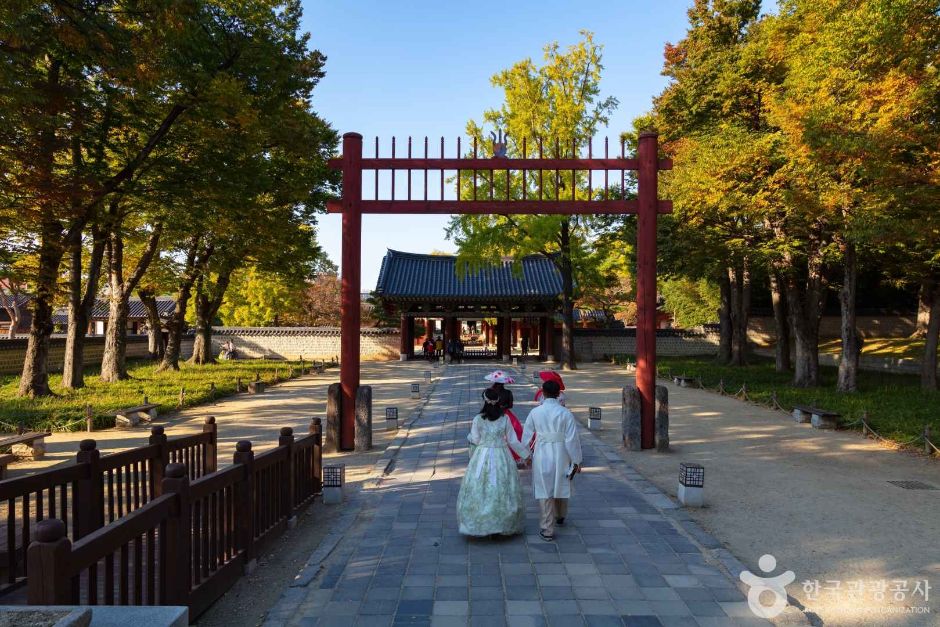
– Homepage
tour.jeonju.go.kr
A registered Historic Site, Gyeonggijeon Shrine was founded in 1410 and holds the portrait of King Tae-jo, the founder of the Joseon dynasty. The shrine was originally given the name Eoyongjeon, but was changed to its current name in 1442, the 24th year of King Sejong the Great. The structure was partially destroyed during the Imjin War (1592-1598), and was restored in 1614. Gyeonggijeon Shrine is beloved by the locals and tourists for its elegance and the lush tree groves in the middle of the city.
⊙ Neulbomstay (늘봄스테이)

– Homepage
http://yeohangga.modoo.at
– Tel
+82-63-231-3040, +82-10-7742-6738
The Traveler, located in Jeonju, Jeollabuk-do, is a pleasant place to stay for families in particular. Apart from the charm of staying in a hanok, visitors can experience traditional games of chance like the Twelve Bridges Game and the Pumpkin Wheel Game. Each room is equipped with a bathroom/toilet, and residents can use the kitchen in the main house to prepare meals.
⊙ Damun (다문)

– Tel
+82-63-288-8607
Situated in Jeonju Hanok Village, Gyo-dong, Jeonju-si, Damun serves Korean table d’hote in a restaurant divided into large and small rooms within a hanok building structure.
⊙ The Hanok (더 한옥)
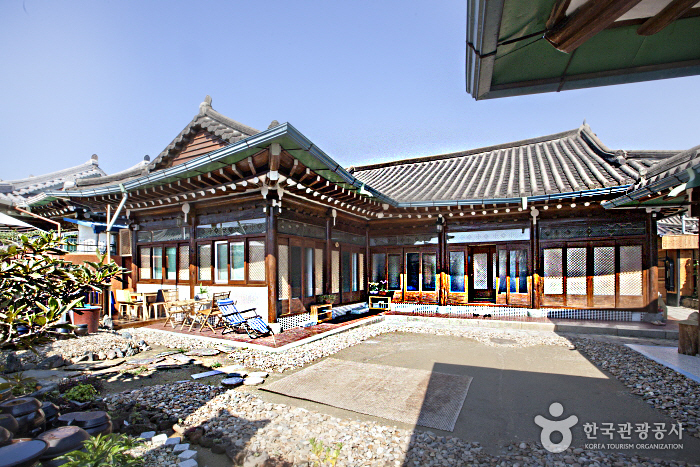
– Homepage
http://thehanok.modoo.at
– Tel
+82-10-2189-4002
The Hanok, located in Jeonju, Jeollabuk-do, is a large hanok guesthouse built of beautiful tradition materials – cypress wood, red clay, and traditional hanji paper. The largest of the 7 rooms (Gwibin – ‘Special Guest’) has a king-size bed, ondol underfloor heating, and a massage bed, making it suitable for two families. One room has an attic, one has an red clay bed, and one has a bunk bed made of re-used traditional materials. In the spacious yard, guests can enjoy delightful moonlight tea parties.
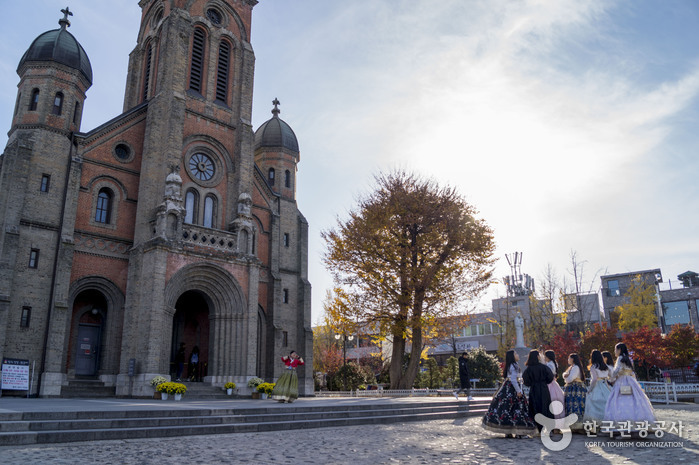
![[Jirisan Trail Course] Inwol-Geumgye](https://ktrip.blogsailing.com/wp-content/uploads/2025/11/1918173_image2_1.jpg)
![Mireuksa Temple Site [UNESCO World Heritage] (익산 미륵사지 [유네스코 세계문화유산])](https://ktrip.blogsailing.com/wp-content/uploads/2025/11/2514991_image2_1.jpg)
One Comment